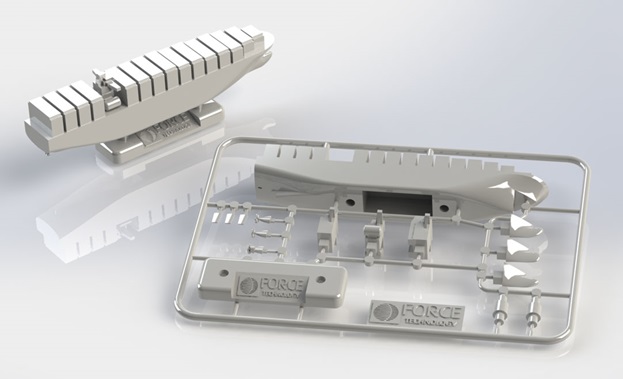Profitability of retrofitting your vessel
Retrofit of existing ships is becoming increasingly interesting for shipowners. It provides the possibility to save fuel and stay competitive against newer eco-designs.
The challenge for the owners is to select the retrofit technology and compare different solutions on a fair baseline. FORCE Technology can assist the shipowner in this progress through our ‘ECOfit’-service. For each ship or class, the ECOfit starts with a technology screening looking at available sense-making solutions for the ship in question. Most owners already have an idea about the problem, but through the ECOfit technology, the possible solutions can be compared on a fair baseline using our profound hydrodynamic experience, advanced CFD tools and our large database of performance data. Moreover, the different technoloies are not only compared under ideal conditions but also at the actual operational profile of the vessel including actual time at sea, variation of draughts and speeds, etc.
The initial investment
An essential part of assessing the profitability of a retrofit is to know the size of the initial investment. This knowledge is obtained through dialogue with the shipowner as well as cooperation with leading naval architects, good connections with suppliers and our experience.
Retrofit technology testing
In order to find the accurate ROI for the retrofit, a detailed technology screening must be carried out to assess the power savings. If one of the selected technologies is to retrofit a new bulbous bow, a CFD design study will be performed and verified by towing tank testing on a range of draughts, trims and speeds in order to find the specific ROI. For a new propeller study, self-propulsion towing tank tests are performed with both the original ‘as-built’ propeller and the new propeller design. These tests are again performed at a range of speeds and draughts to provide input to the ROI calculation
Case study - Clipper G-Class
Retrofitting a bulbous bow is not only interesting for large container vessels. FORCE Technology has also carried out a bulbous bow retrofit study on the Clipper G-Class, a 9,100 dwt multipurpose heavy lift container vessel. This vessel has originally been optimised for 7.5 m draught and a speed of 16 knots, but the operational profile shows that the vessel often operates at lighter draughts (~6.1 m) and slow-steam (~12.5 knots).The new bulbous bow is optimised for two speeds and two draughts where each combination of speed and draught is selected and weighted according to the operational profile. The new bulbous bow is designed utilizing parametric hull form optimisation by the FRIENDSHIP Framework. This framework is coupled with the advanced RANS CFD code STAR-CCM+ for evaluation of the resistance and an optimisation routine searching for lowest weighted resistance.
The weighted total resistance saving is 11.7%. It should be noted that for the deepest draught and highest speed (close to the original design point) of the operational profile, the resistance is actually increased by 2.5%, but the vessel rarely operates at this condition. Further, it should be mentioned that the performance of the original bulbous bow can be improved by trimming, and the new bulbous bow is less sensitive to trimming.
In addition to the optimisation services, FORCE Technology can provide a complete design package for a new bulbous bow including drawings for class approval and detailed construction drawings. The design package is made in cooperation with an acknowledged design firm and the client.
”Estimating the actual gain when modifying the bulbous bow is quite complex as it depends on the future and usually unknown operational profile, i.e. future loading and speed conditions. Further, the savings from the current practice for trim optimization will be reduced somewhat. These are the factors which must be dealt with systematically when considering a bulb modification. However, we have confidence in our final savings estimate, not least due to the proven optimization method used by FORCE Technology." Kjeld Roar Jensen, Clipper Fleet Management / Head of Performance Management


